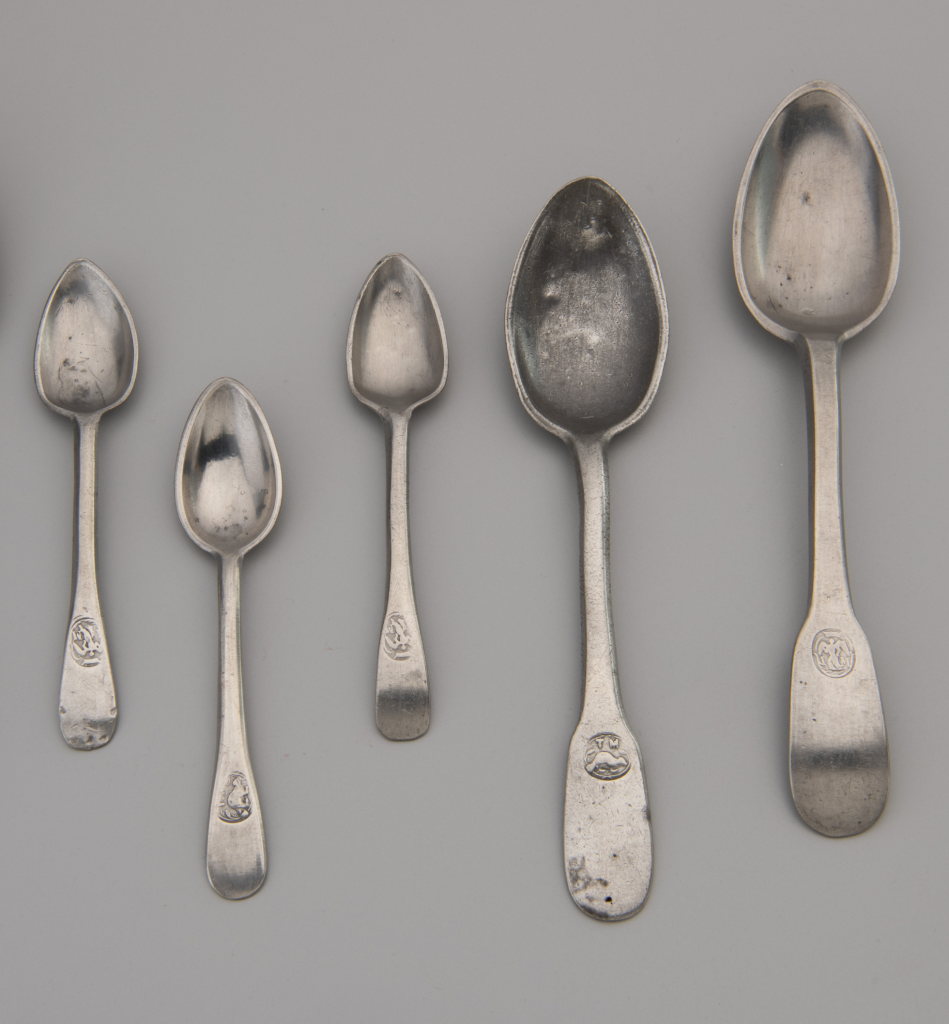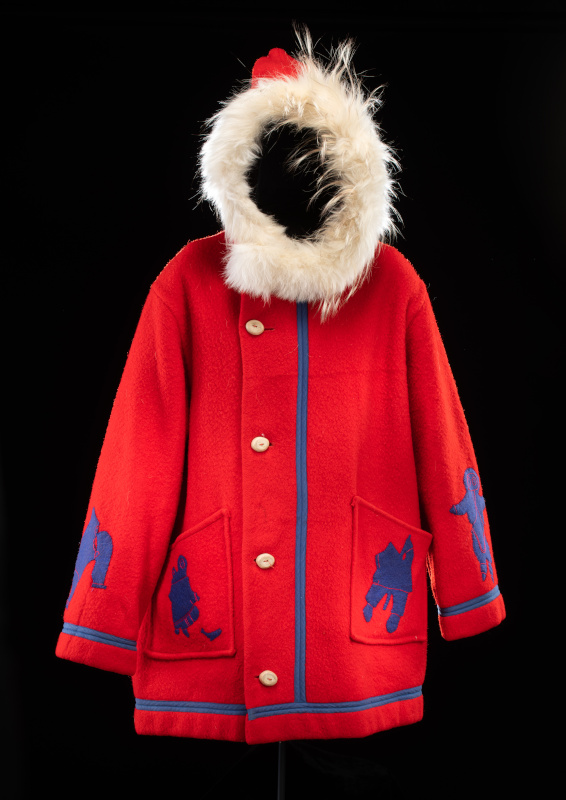At least once or twice a year, pewter utensils — with their quiet charm — appear in auction catalogues and the inventories of antique dealers, catching the eye of “Canadiana” lovers. These rare tablespoons, teaspoons and ladles are marked with the effigy of a beaver, the initials “T. M.,” and a “Montreal” scroll — or, even rarer, a single touch mark of an angel with outstretched wings flanked by the initials “I.M.” Today, these spoons are found in private and public collections, including the Canadian Museum of History, which has at least half a dozen in its own.
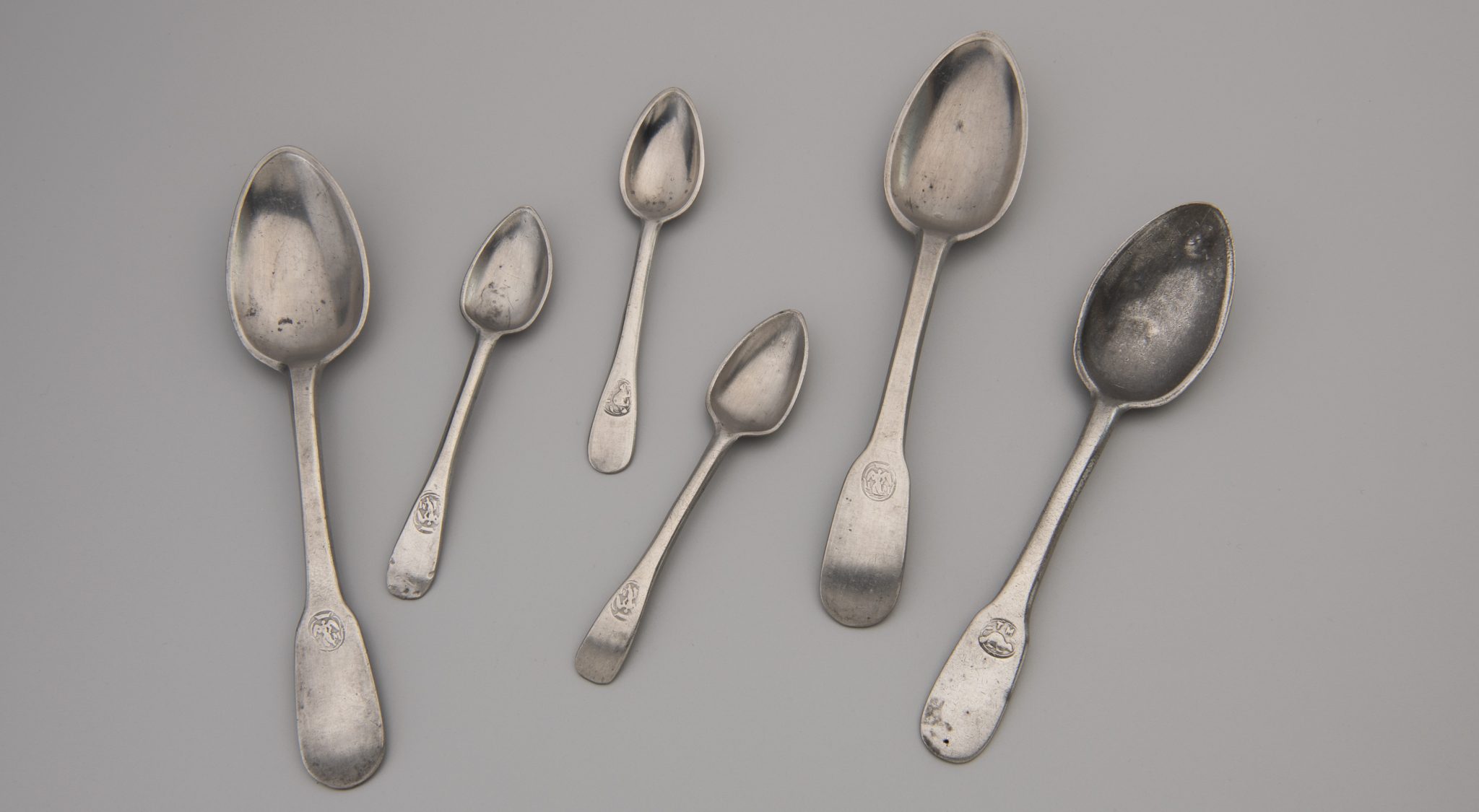
Selection of spoons showcasing their diversity and style.
It’s important to know that the spoon was the ultimate (and for some, the only) utensil until the 19th century. Pewter was one of the go-to materials for making dishes and flatware. It was known as “poor man’s silver” but was actually used by all social classes. In Canada, under the French then British regimes, it was imported but also crafted locally on a small scale. Ceramics, which had long been used alongside pewter for tableware, eventually overtook pewter along with steel and silverplated cutlery, which became cheaper to buy.
Early decryption efforts
To appreciate the interest in these marked spoons, one must understand that almost everything made in Canada pre-20th century was anonymous. Exceedingly rare pieces of furniture bore the signature of a maker or first owner. Precious metal works are an exception. In keeping with the longstanding European tradition, gold and silver were marked not so much as an expression of the maker’s pride than as a form of quality control, or a guarantee of its value. The European custom of marking pewter in a similar way never caught on in Canada, making the T.M. and I.M.-embossed spoons an exception.
Interest in these spoons and their mystery date to the 1920s. They were spotted by collectors — first by Americans, who extended their quest for colonial-era relics to Canada, and then by local enthusiasts. Ramsay Traquair, an art historian who taught at McGill University, was the first to write about this in his monograph, The Old Silver of Quebec (1940). He noted that some attributed them to a Thomas Martineau, but that he himself did not believe it. In A Canadian Attic (1955) — one of the very first books to introduce the merit of Canadian antiques to a wider audience — Gerald Stevens notes that the T.M. mark had subsequently been attributed to Thomas Menut and the I.M. to Jean-Baptiste Menut. Donald Blake Webster, Royal Ontario Museum curator, crystallized this attribution in his Book of Canadian Antiques (1974), where he states that Thomas had worked from 1810 to 1820, possibly until the 1850s, and that his son, Jean-Baptiste, had succeeded him, working in Montréal from 1857 to 1868. These names and dates are echoed today in museum and auction catalogues.
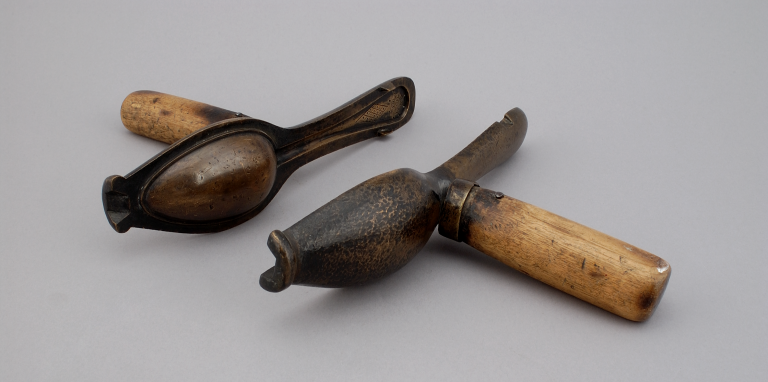
Spoon mould, made between 1790 and 1860.
Canadian Museum of History, 978.170.130.1-2
Mystery solved? Quite the opposite, in fact! Knowledge, even that of experts, must be questioned from time to time. In this regard, the digitization campaigns and search engines of our day and age allow for new breakthroughs. Quebec — the apparent origin of the spoons — is a particularly spoiled place, as parish archives have from the time of French colonization functioned as civil registers, recording births (baptisms), marriages, and deaths (burials) more systematically than in many other parts of the world. Notaries also recorded all kinds of contracts under civil law. These archives were not destroyed by revolutions and great wars. As is the case for Canada as a whole, a census of the province’s population has been taken at regular intervals since the second half of the 19th century, and city directories — precursors of the printed phone books many of us remember — became extremely popular. These types of searchable resources now make it possible to find a needle, or spoon, in a haystack.
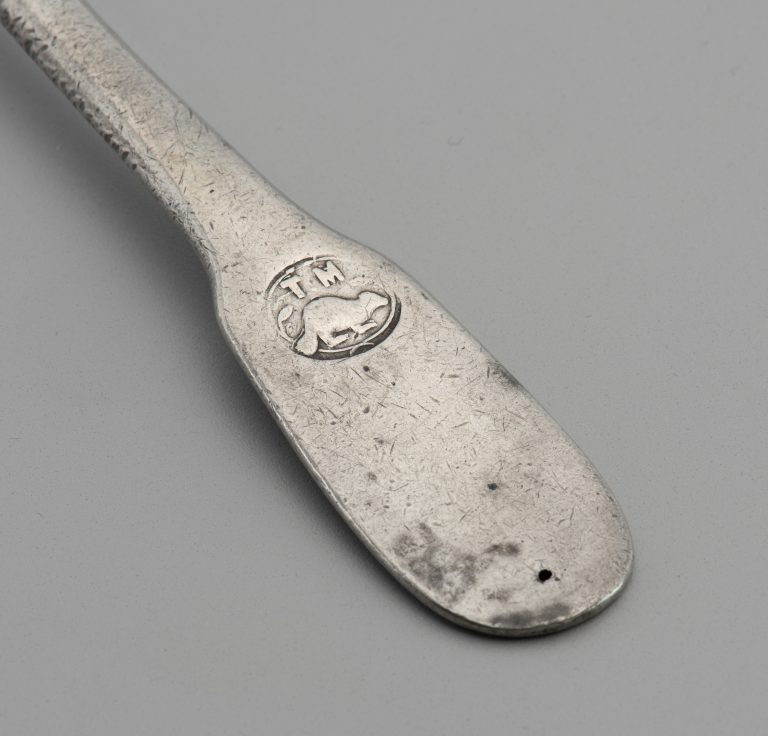
Beaver touch mark.
The man behind the object, Thomas-Jean-Baptiste Menut
One can make an initial observation when searching through the sources mentioned above. There were never two pewter workers — Thomas Menut and his son, Jean-Baptiste Menut — just one: Thomas-Jean-Baptiste Menut. He is listed in parish records under this full name but in censuses, he is listed under the more succinct “Jean-Baptiste,” which certainly contributed to the confusion of earlier academics. One also gleans that he was originally from France and did not arrive in Canada until 1856. Fortunately, Canadian sources are not the only ones that have benefited from digitization and online indexing efforts.
It turns out that Thomas-Jean-Baptiste Menut was born in 1818 in Beaulieu-sur-Argonne, in northeastern France. He learned his father’s craft, who, like many local men, had been a travelling pewterer. However, he travelled further afield, as far as Belgium and the Netherlands. It was in Brussels in 1845 that he married Henriette François, also a native of his region and the daughter of a pewter worker. Nine years later, in Rotterdam, the couple and three of their children set sail for the United States.
Upon arriving in New York, Menut declared that he wanted to settle in the United States, but he ended up settling in Montréal in 1856. The archives provide glimpses of a difficult life: of the couple’s six known children, only the eldest, Ernest-Siméon, reached adulthood. Menut disappears from Montréal censuses and directories in the late 1880s, but he passed away on May 24, 1904.
Pride in a modest craft
Pewter moulding was a humble trade, but Menut brought a pride and skill to his practice that appear to have been unmatched in Canada at the time. The shapes of his spoons are not exceptional, but they are neater and made of a finer metal than the average spoon made by the travelling pewterers that moved about the countryside. Menut took the time to stamp his wares — a practice that, as we have seen, was largely unprecedented in this part of the world.
Because of the similarity between the “I.M.” and “T.M.” spoons and the fact that the sources do not hint at the existence of another pewterer with either of these initials, a hypothesis emerges: that Menut carried an angel punch mark in his luggage (the angel being a typical pattern among pewter workers in northeastern France, Belgium, and the Netherlands, as well as in Germanic countries), then decided to have a second punch made to represent his new country (the effigy of the beaver and the word “Montreal”). It is unclear why he went from using the initial “I” to “T”, but this is the most likely interpretation.
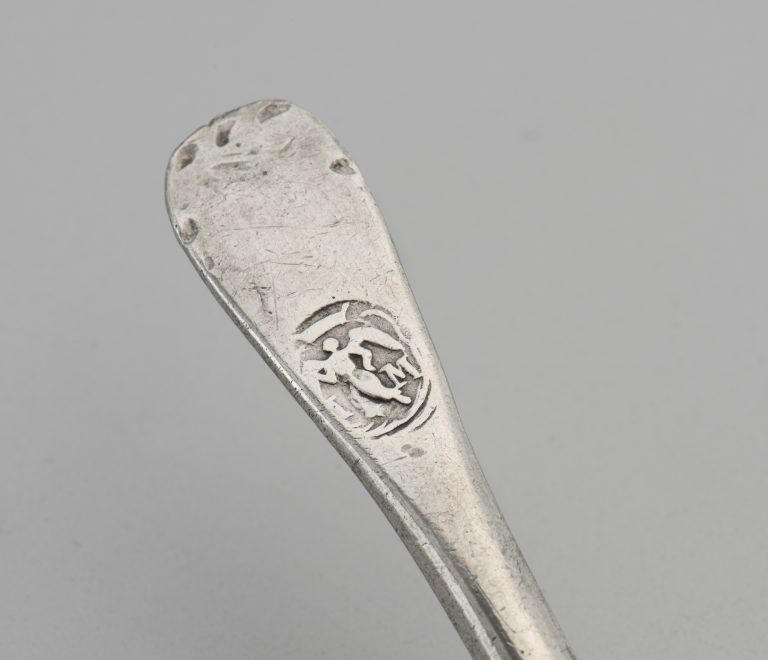
Angel touch mark.
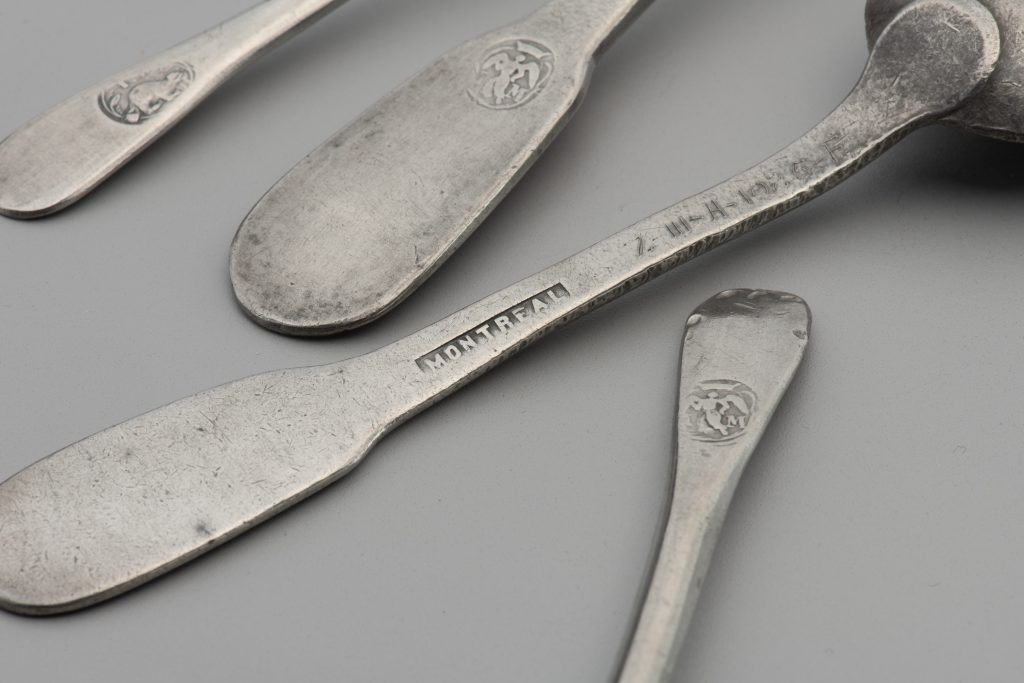
Back of spoon with beaver, reading “Montreal.”
Research allows us to explain an object and explore the human side of it. We can reconstruct a life that was private and difficult, but whose material output is both lasting and cherished. The life of an immigrant, who, whether expressing his personal identity or taking a commercial tactic, embraced the symbol of his adopted country.
These spoons survived in remarkable quantities because of two factors. First, because Thomas-Jean-Baptiste Menut arrived on the scene near the end of the pewter era, and therefore, many of his spoons probably never had time to wear out and be melted down to recycle their metal. Second, because his angel and beaver touch marks gave these objects a rare charm that inspired people to keep them.

Jean-François Lozier
Jean-François Lozier has been Curator of French North American history at the Museum since 2011. His research focuses primarily on French-Indigenous relations during the 17th and 18th centuries, Early Canadian material culture in all its forms, and memory and commemoration of this period.
Read full bio of Jean-François Lozier